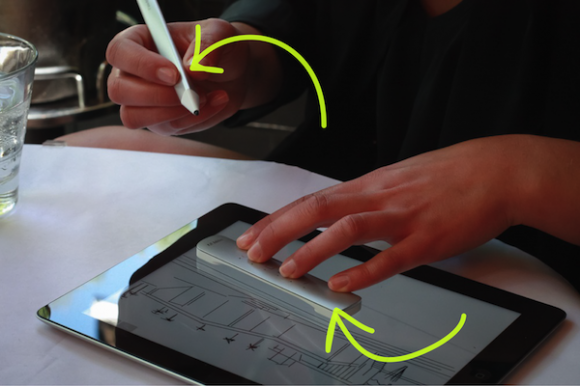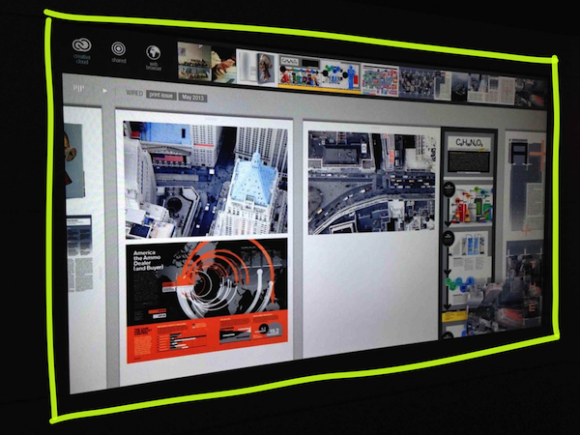anewdomain.net — At the Adobe MAX 2013 conference earlier this month — it was May 4 to May 6 — the future of design got clearer. And Creative Suite kicked the bucket.
That’s right. According to Adobe execs, there will be no Creative Suite 7 — or CS 7, as it is more widely known. It’s Creative Cloud now — or nothing.
That’s just one of many major takeaways attendees including pro designers, illustrators and journalists got from Adobe MAX 2013. Check out other Adobe MAX 2013 news and my analysis below.
Why no CS 7? Adobe execs said the firm plans to make its Creative Cloud subscription service the only way to get Creative Suite software. There will be no more cereal box-type licenses, or any traditional version of Creative Suite software at all.
It’s a sign of the times. At least customers will no longer have to wait for Adobe to release incremental CS updates. These appear automatically for users who subscribe to the newer cloud-based service.
And it’ll be cheaper, too. Rather than having to pay upwards of $2,000 for the whole package up front, customers will be able to pay over time. That works out to something like $20 to $70 per month, depending on the subscription plan.
Creative Cloud, just debuted last year, always looked like a harbinger of what was to come. But Adobe’s rapid killing off of Creative Suite as a bundled software program took the industry by surprise.
There is even some outrage among loyal CS customers. More than 11,000 Adobe users are signing and circulating a Change.Org petition demanding that Adobe “eliminate the mandatory Creative Cloud subscription model.” The argument: They say the pay-per-license model was more cost effective than the Creative Cloud.
PC Magazine ran the numbers in an analysis to see if there was anything to that claim and concluded just the opposite of what the petitioners are complaining about.
According to PC Mag, Creative Suite Master Collection would cost $2,644 over the course of three years, compared to about $1,800 for equivalent Creative Cloud services over the same amount of time. Of course, the reliability of cloud-based services is something that worries petitioners, too.
Creative Cloud will probably always be less stable than the old model. But there are some notable advantages involved with membership. Seamless, continuous updates are just one positive to consider. There are also Cloud-exclusive services that focus more on web collaboration and the burgeoning crossover between the worlds of development and design.
Creative Cloud and its murder of the licensing model wasn’t the only news at Adobe MAX 2013. Here are some of the other highlights.
Adobe hardware. Seriously.
Adobe’s VP of Experience Michael Gough appeared at the show to demo the Project Mighty stylus and Project Napoleon ruler prototypes, both created in collaboration with renowned industrial design firm Ammunition.

These hardware devices, he said, will be fully integrated with the Creative Cloud and its various services.
The hardware was impressive in demo-mode. Project Mighty stylus, with its aluminum body and a pressure-sensitive, plastic tip that produces expressive lines in a variety of drawing styles, lets you access cloud-based content from tablet applications. It’ll distinguish between a stylus and finger, too. Draw with the pen, erase with your finger and step forward or backward using multi-touch commands. Pretty cool.
The compact Napoleon ruler works in tandem with the pen to produce perfectly straight, vector-based lines.It also will assist in the creation of other basic shapes and, execs said, is fully integrated with Creative Cloud services.
In a blog post, Gough wrote:
… although we spend many hours a day behind the keyboard and mouse, we still often start the creative process as we did thousands of years ago with pen and paper. But with tablets and new input methods like Mighty, this is going to change – I am confident.”
He’ll get a lot of support on that note. Customers have been waiting for true hardware and software unity on the Adobe front and this begins to provide it — even if it is Adobe Cloud-based.
Adobe, with its pulse on analog design trends and overall aesthetic, is worth watching with this upcoming hardware. It’ll be interesting to see how these prototypes develop.
And then there’s Project Context.
Project Context: Re-imaging magazine layout design.
Claudia de Almeida, a design director at Wired, demonstrated the Project Context approach to designing magazine layouts at this year’s MAX conference. Reps from journalistic entities demo-ing projects was, admittedly, a bit strange. But …

The Context system was intriguing. It is a Cloud-integrated hardware prototype that reflects Adobe’s focus on recreating the analog experience. It uses two 1080p, high-definition touch screens and a smaller, table-like screen to enable collaborative layout design.
The current prototype supports 30 touch points. That means that up to 30 users will be able to collaborate on the same project simultaneously.
The Context interface allows you to do pretty much everything that’s possible with desktop applications like Adobe InDesign. You’re able to scroll, move and resize images or pages, add text from a keyboard or draw directly on the touch screens.
Here’s a YouTube video of Project Context in action:
All in all, Adobe MAX 2013 shook up a lot of people with its killing off of its Creative Suite, new hardware and other announcements.
Projects Mighty and Napoleon are as yet without public due dates. They’re still prototypes. As for Creative Cloud, unless something radical happens, unhappy CS licensors are going to have to live with it.
It’s cheaper for the company, after all, and that’s going to be the bottom line.
For aNewDomain.net, I’m Madison Andrews.













